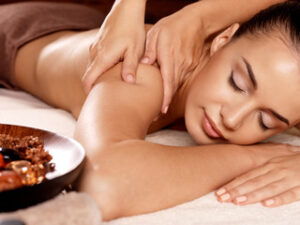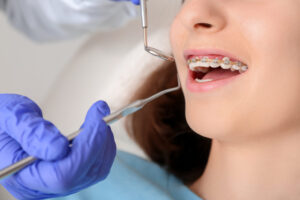Tulsa Massage involves the manipulation of the body’s soft tissues, using hands, fingers, elbows, knees, forearms or feet. It can reduce stress and pain, increase flexibility, and boost overall well-being.

Research shows that massage triggers the parasympathetic nervous system, slowing your heart rate, lowering blood pressure, and mobilizing glucose. It increases the availability of serotonin, which regulates mood and sleep.
Research suggests that massage reduces stress by lowering your heart rate, decreasing your blood pressure, and releasing feel-good hormones. This relaxation response decreases the negative effects of stress, such as high blood pressure, insomnia, digestive problems, and depression. It also boosts the immune system and helps with recovery from injuries.
Massage increases positive hormones such as endorphins, serotonin and dopamine which help the body relax. Aromatherapy is used during your massage to encourage this response with the use of different oils that promote relaxation and calm the mind. When a person is stressed they produce the hormone cortisol which increases tension and anxiety. This is because the hypothalamus in the brain signals the adrenal gland to release cortisol and the body responds to this with a “fight or flight” reaction. A massage has been shown to stimulate the pituitary gland and suppress the production of cortisol which then reduces the stress and anxiety levels in the body.
When a person has low levels of feel good hormones such as serotonin, they are more likely to experience feelings of anxiety and depression. This is because the brain cannot function properly when this hormone is too low. A massage has been shown to increase serotonin levels which is why it is so effective at reducing stress and anxiety.
A massage also has a positive effect on mood by increasing activity in the left frontal lobe of the brain, which controls emotions. The vagus nerve is also stimulated which leads to a reduction in cortisol and puts the body into a calmer state. This is why regular massage is so important for a healthy mind and body.
A study found that even a short neck and shoulder massage had an immediate effect on heart rate variability (HRV) which is linked to stress and anxiety levels. Researchers also found that the type of massage didn’t matter – both Swedish and deep tissue massages stimulated the parasympathetic nervous system to cause a stress-reducing effect. Regular massage can be a powerful tool to combat and prevent stress and anxiety in the body.
Increases Blood Flow
Every second of the day our circulatory system works hard to deliver oxygen and nutrients to every part of our body. This constant flow of fluids is vital for our health and well-being. Massage stimulates the flow of blood and lymph, enhancing circulation to benefit both muscles and the rest of the body. This improvement in circulation is due to both the physical manipulation of soft tissue and the chemicals released as a result of the relaxation response.
One of the first things you’ll notice during a good massage is that your skin will look flushed and warm. This is because the mechanical stimulation of rubbing (massage) causes capillaries in the skin to dilate, allowing more blood to pass through them. This is called superficial (cutaneous) hyperaemia.
The dilated capillaries also give your blood more space to move, increasing circulation. This is important because your muscles need the oxygen and nutrients delivered by blood, but they can only do that if there is enough space for them to reach the capillaries. This increase in circulation to the muscles helps them perform their jobs more efficiently, and it may also help with the removal of metabolic wastes, which can build up in muscles and cause pain and inflammation.
While many studies have shown that massage improves circulation, the precise reasons why are not always clear. Some research suggests that it increases venous return, which is the rate at which blood is drawn back towards the heart. Others suggest that it increases the movement of the erythrocytes, or red blood cells, through the capillaries. Yet other researchers have found that the increased permeability of the blood vessels caused by massage simply allows more blood to flow through them.
In addition to improving circulation, massage can also decrease blood pressure in some parts of the body. This can be helpful in people who suffer from Raynaud’s phenomenon, a painful condition that reduces circulation to the fingers and toes. It can also be useful in reducing swelling after injury or surgery.
It is also worth noting that massage can increase the elasticity of arteries and veins, which in turn can also help to increase the flow of blood and lymph. However, it is important to remember that most studies addressing the effects of massage on blood circulation are not looking at actual changes in arterial or vascular diameter, and are relying on indirect measures of circulation such as skin temperature or the amount of erythrocytes in the blood.
Reduces Muscle Tension
Massage increases the supply of oxygen and nutrients to tissues, as well as removing waste products. This helps to reduce muscle tension, which in turn decreases pain and fatigue. It also stimulates the production of serotonin, a hormone that calms the nervous system. Serotonin also decreases the excitability of muscles, decreasing the tightness that can result from over-training or injury.
Tight muscle tissue can increase the amount of stress and tension a person feels because it restricts movement, often causing pain as a result. In addition, this tightness can lead to a lack of flexibility and reduced range of motion around the joints.
When muscles are tight, they shorten the muscle fibers, which limits movement. Massage increases the temperature of the soft tissue and helps to elongate the fibers, allowing for increased flexibility and range of motion. In addition, massage can decrease tension by increasing psychological relaxation and increasing tissue elasticity.
Aside from relieving muscle tension, massage can help with pain caused by myofascial tissue knots. These knots can be felt as lumps under the skin and are caused by overuse or injury. Massage helps to release these knots and restore the myofascial tissue to its normal function, preventing pain in other areas of the body as a result.
Inflammation is a natural part of the body’s healing process, but too much can damage cells and nerves. Studies have shown that massage can reduce the inflammation associated with muscle injuries by reducing pro-inflammatory cytokines. It can also increase the number of mitochondria, which are the powerhouses of the cell that produce ATP, the energy needed for cell function and repair.
The light pressure applied by massage also triggers the body’s parasympathetic nervous system, which is responsible for regulating the return to a resting state after emotional or physical stress. This effect can be seen in the reduction of heart and breathing rate, blood pressure, cortisol levels and the production of stress hormones. It can also be seen in an increase in the level of oxytocin, another hormone that promotes the relaxation of the body.
Increases Endorphins
Massage causes a release of endorphins, which are natural chemicals that block pain signals in the brain. They also increase serotonin and dopamine levels which improve mood, sleep quality and concentration. As a result, a person feels euphoric, or high, after a good massage. A famed Victorian physician, Dr. Dowse, summed it up thusly: “The mind, which before the massage was in a perturbed, restless and vacillating state, becomes calm, quiet, peaceful and subdued after the massage.”
The morphine-like effects of these feel-good hormones reduce muscle spasms, soothes the nervous system, and can decrease anxiety and depression. They also increase blood flow, which helps the body eliminate toxins. In addition, these chemicals boost your immune system and can help you eat less and gain weight more easily.
Another result of the endorphins is that they inhibit the production of cortisol and other stress hormones, and increase parasympathetic activity, which promotes relaxation and sleepiness. The lowering of adrenaline and norepinephrine can also help ease the symptoms of some chronic health conditions.
It also increases oxytocin, which is known as the “love hormone” or the “cuddle hormone.” This is released during skin-on-skin contact, such as when a mother cuddles her infant or when two people kiss. It is believed that this hormone is responsible for many of the positive emotional bonds we experience in life.
It also seems to increase the amount of dopamine in the brain, which enhances motivation and inspires creativity and fine motor movement. Low levels of dopamine are linked to depression, obsessive-compulsive behavior and a host of other medical conditions. In addition, this hormone has been shown to have a balancing effect on the immune system and is crucial for normal metabolism. Studies have found that a single massage can raise the levels of dopamine by as much as 16%. However, most research is still in its early stages. Just a few small studies don’t prove anything. A whole body of research is needed to settle the question of whether or not massage does, in fact, increase blood endorphins. Even so, these results do show promise.

